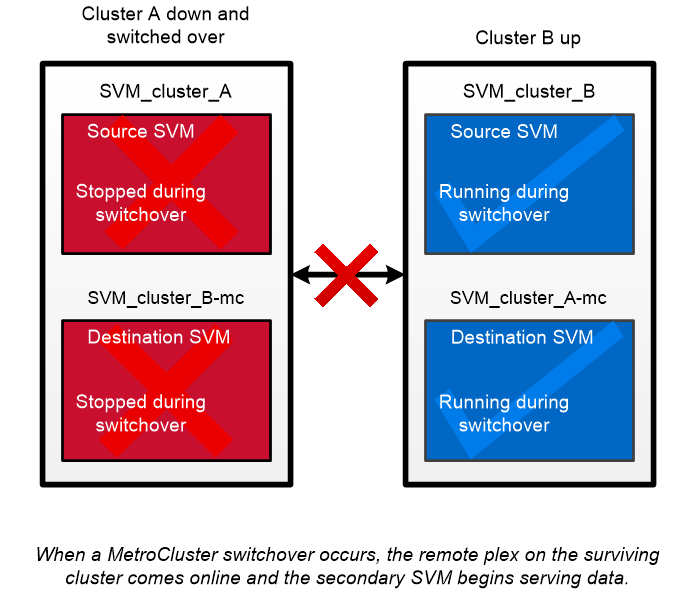MetroCluster continuous availability
MetroCluster configurations protect data by implementing two physically separate, mirrored clusters. Each cluster synchronously replicates the data and SVM configuration of the other. In the event of a disaster at one site, an administrator can activate the mirrored SVM and begin serving data from the surviving site.
- Fabric-attached MetroCluster configurations support metropolitan-wide clusters.
- Stretch MetroCluster configurations support campus-wide clusters.
Clusters must be peered in either case.
MetroCluster uses an ONTAP feature called SyncMirror to synchronously mirror aggregate data for each cluster in copies, or plexes, in the other cluster's storage. If a switchover occurs, the remote plex on the surviving cluster comes online and the secondary SVM begins serving data.

| Using SyncMirror in non-MetroCluster implementations You can optionally use SyncMirror in a non-MetroCluster implementation to protect against data loss if more disks fail than the RAID type protects against, or if there is a loss of connectivity to RAID group disks. The feature is available for HA pairs only. Aggregate data is mirrored in plexes stored on different disk shelves. If one of the shelves becomes unavailable, the unaffected plex continues to serve data while you fix the cause of the failure. Keep in mind that an aggregate mirrored using SyncMirror requires twice as much storage as an unmirrored aggregate. Each plex requires as many disks as the plex it mirrors. You would need 2,880 GB of disk space, for example, to mirror a 1,440 GB aggregate, 1,440 GB for each plex. |